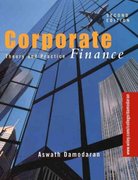Answered step by step
Verified Expert Solution
Question
1 Approved Answer
#5 Capital Budgeting Practice Suppose we want to prepare a set of pro forma financial statements for a project involving a new financial calculator for



#5
Capital Budgeting Practice Suppose we want to prepare a set of pro forma financial statements for a project involving a new financial calculator for Hewey-Packer. In order to do so, we must have some background information We assume: a. Sales of 1,000,000 units per year at $45 per unit b. Variable cost per unit is $26.00 Fixed production costs are $12,000,000 per year. The project has no salvage value and a 7 year life The project has an initial fixed asset acquisition expense of $21,000,000. We will depreciate straight-line d. Net working capital outlay is $am in period zero with 60% recovered in project's terminal year e. The firm's required rate of return is 8%. The firm's tax rate is 34% 1. Complete following Projected Income statement Sales 45,000,000 Variable costs 26X1000 000 = Fixed costs Depreciation 45,000000 26,000,000 12,000,000 3,000,000 4,000,000 1 360,000 2, 646,000 EBIT Taxes (34%) NI 0CF=FB1(1-1)+DP 2. Find the Operating Cash Flow (OCF) 4000,000+3,000-1360,000= OCF EBIT + Depreciation - Taxes OCF = 5,6 40,000 +NI+Depreciation - 154kes -costs 14) - Depreciation (SVC-FO-DP) (4) + Dep (S-VC-Fc) (1 t) + Deput 3. Draw Project CFs, Assume that 60% of NWC is recovered at the end of life. Recall that CFs from assets has three components: 1. Operating Cash Flow (OCF): EBIT + Dep. - Taxes 2. Change in NWC: A Current Assets - Current Liabilities 3. Net Capital Spending (NCS): A Fixed Assets + Depreciation + + 0 1 2 3 S441 4 54 5 S440 6 5640 7 ECD 5640 OCF SCHID NWC -8,000 4 800 (1) . . Spending -21.000 CF-> Total -29.000 10440 if there is salvage value put it @ the end of the perial 4. What is the NPV and IRR with 10% required rate of return? Are you going to accept this project by NPV method or IRR with 10% required rate of return? 1 s S640 314 SWHO SOVO SC40 S440 - 29poo PVs -9.000 + SEN 10,440 10,943 + 5,60 + (1.17 5C43 (NPV = a. NPV=92104 IRR = -29,000+ 1+ CF=29000 CO- 3640 FO, = 6 F2= 1 IRR C PT> 10,89 Accept the project CO= 10440 IRR) 10% 5. Try to express the NPV that you have calculated in question 4 in annual basis. Following equivalent annual costs (EAC) method allows expressing the NPV in annual basis. This method is useful when we compare project with different lives. We want to choose the most cost-effective project but the process is complicated if the assets have different lives. Commonly, we use equivalent annual costs (EAC) or equivalent annual annuity (EAA) to evaluate alternatives. This is simply the present value of the project's costs calculated on an annual basis. It is a three step procedure to find the EAC or the EAA: 1. Find each project's net present value over its initial life. NPV= 9 2. Find the equivalent annual cost factor/equivalent annual annuity factor. 3. Discount the net present value by equivalent annual cost or annuity factor. Solution: 1. Use the NPV that you have calculated in question 4. (you can just write down NPV) 2. You can calculate EAC/EAA factor in following way. -1 PMT 10% 1 7 N CPT PV = ???Step by Step Solution
There are 3 Steps involved in it
Step: 1

Get Instant Access to Expert-Tailored Solutions
See step-by-step solutions with expert insights and AI powered tools for academic success
Step: 2

Step: 3

Ace Your Homework with AI
Get the answers you need in no time with our AI-driven, step-by-step assistance
Get Started


